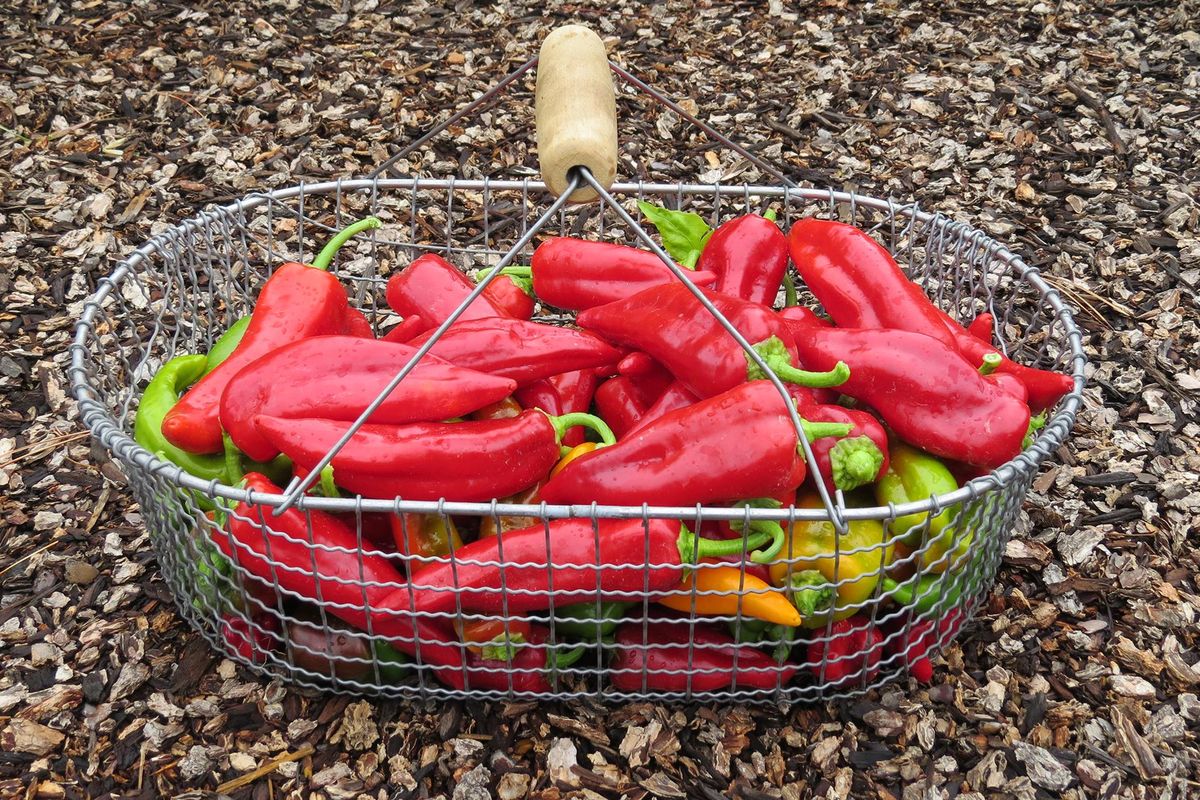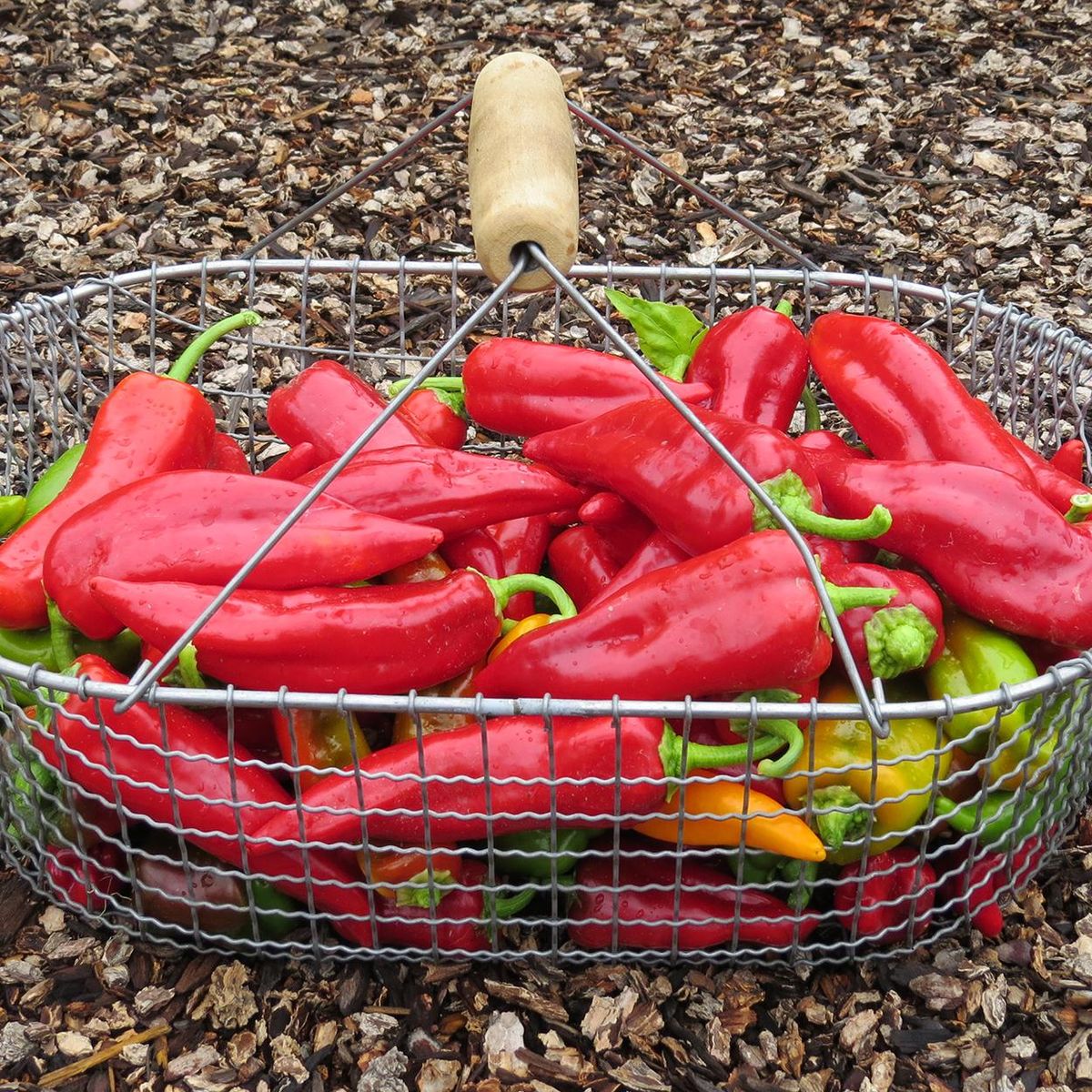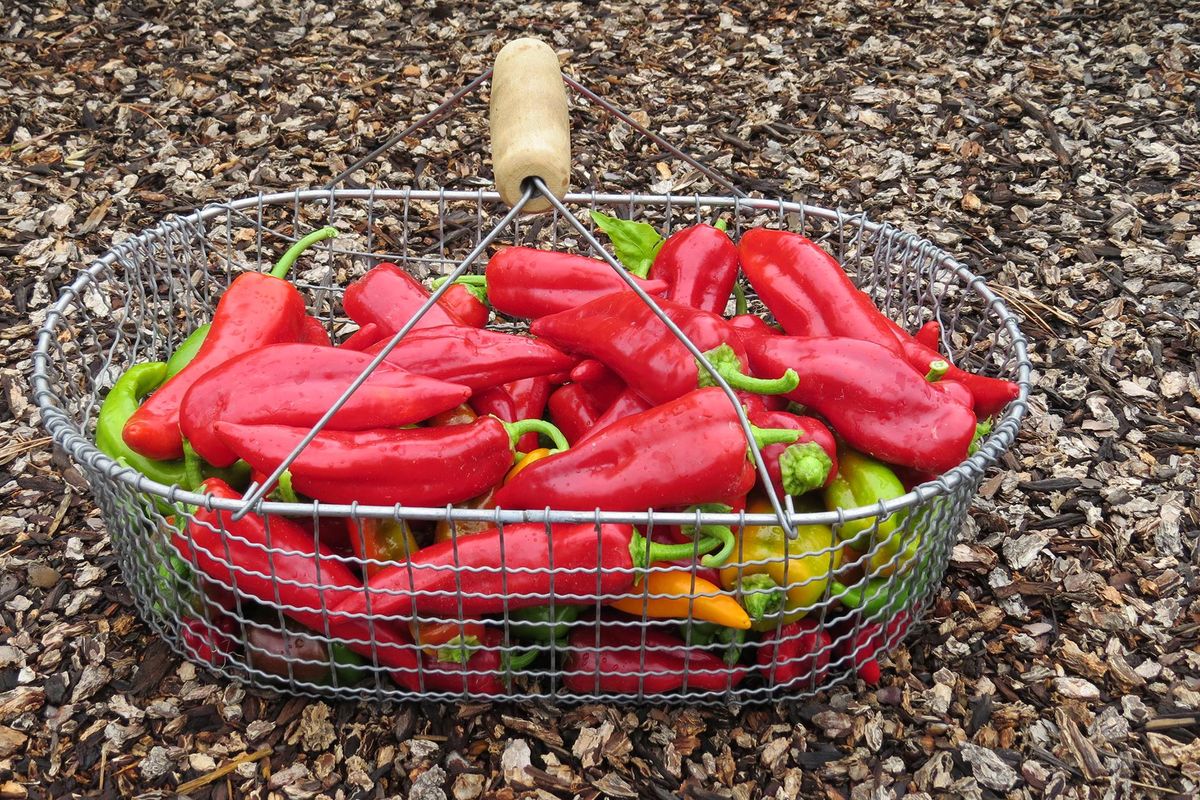Hot, dry summer led to mixed garden results
Peppers grew especially well in this year’s hot summer temperatures. (SUSAN MULVIHILL SPECIAL TO THE S / Susan Mulvihill Special to The Spokesman-Review)
Considering how hot and dry this growing season has been, it’s probably not very nice of me to evaluate the performance of the vegetable varieties I grew. But since I’m continually fine-tuning my list of the best crops to grow, let’s continue with the tradition.
I had mixed results with the beans this summer, which I’m attributing to the heat. For pole beans, I grew Italian Snap − which has typically done beautifully in our garden − and Rich Purple Pod. Neither variety produced as much as I anticipated. While the latter has beautiful purple beans, they turn green when cooked so the beauty is short-lived.
It’s a good thing I also planted bush beans because they were very prolific. French Filet was tender and flavorful. The new variety I tried, Purple Teepee, was touted for holding its beans above the foliage, which should have made them easier to pick. It turns out that picking purple beans − which weren’t necessarily held high − from plants that have purple stems is difficult at best.
We had one of our earliest corn harvests ever, about three weeks ahead of schedule. I planted Luscious, and the ears were large, plentiful and very sweet.
This was truly the year for growing cucumbers. I grew Platinum, Straight Eight and Parisian Gherkin. While its creamy white color was unusual, Platinum tended to be bitter and had thicker skins. The other two were very productive and tasty.
Melons were also stars in the garden. I planted honeydew-type Arava, alongside El Gordo and Napoli cantaloupes. Arava had succulent green flesh and was quite productive, as was Napoli. While El Gordo was noted for producing huge fruits, we only got one melon from four plants, although it was a tasty four-pounder.
Golden Sweet snow peas were a nice addition in the spring. Their purple flowers and chartreuse-colored pods made them unusual, but their flavor and prolific nature made them a winner.
Another crop that did exceedingly well was the peppers. I started Sunset Mix from seed and was given Italian Sweet, Fooled You Jalapeno, Big Jim, Mexibell and Aconcagua by a friend. All were very productive and tasty in the huge batches of salsa we made.
One of the fun crops was Trombetta di Albenga climbing summer squash. The trombone-shaped fruits lived up to their description of having a nutty artichoke flavor. I’ll definitely grow them again.
I grew five varieties of tomatoes this year: Jetstar and Chef’s Choice Orange for slicing, Italian Pompeii and Amish Paste-Kapuler for sauces, and Fantastico grape tomatoes. The Italian Pompeiis suffered terribly from blossom-end rot but everything else grew beautifully. We loved Chef’s Choice Orange for their large, colorful and sweet fruits. Amish Paste-Kapuler is an heirloom touted for being more cold-tolerant, vigorous and having larger fruits than regular Amish Paste. It delivered on all counts. The fruits were enormous, although they were juicier than most paste tomatoes I’ve grown.
The three heirloom winter squash I grew − Landrace Lofthouse Moschata, Sweet Meat-Oregon Homestead and Candystick Dessert Delicata − have performed well in the garden but it’s too early to report on the flavor quality. I also planted Blue Ballet squash, a more petite Hubbard-style, and it’s also looking good.
This is my last column for the 2015 garden season. I will update my blog throughout the fall and winter months so be sure to visit susansinthegarden. blogspot.com. You can also find me on Facebook at facebook.com/ susansinthegarden. And remember, if you have a gardening question, I’m just an email away at inthegarden@live.com.
Susan Mulvihill is co-author, with Pat Munts, of “Northwest Gardener’s Handbook.”


